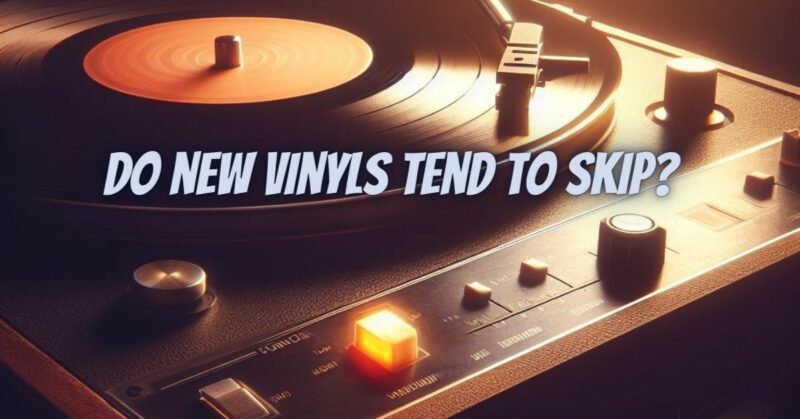Vinyl records have experienced a remarkable resurgence in popularity in recent years, attracting both longtime enthusiasts and newcomers to the world of analog music. While vinyl offers a warm and authentic listening experience, it’s not without its quirks and challenges. One common concern among vinyl collectors, especially those new to the format, is whether new vinyl records tend to skip. In this comprehensive article, we’ll explore the factors that can lead to skipping on vinyl records, dispel common myths, and provide guidance on how to minimize this issue.
Understanding the Skipping Phenomenon
Skipping occurs when the turntable’s stylus (needle) momentarily loses contact with the grooves on the vinyl record, causing the playback to jump forward or backward. Skipping can disrupt the listening experience and potentially damage the record and stylus. Several factors can contribute to this issue:
1. Record Pressing Quality
The quality of the vinyl record’s pressing plays a significant role in whether it will skip or not. Mass-produced records, especially those of lower quality, are more prone to skipping due to inconsistencies in the vinyl material and the pressing process. Records pressed from recycled or inferior vinyl can have surface imperfections that increase the risk of skipping.
2. Record Thickness and Weight
Thicker and heavier vinyl records are generally less likely to skip. Standard vinyl records are usually 120 grams, while audiophile-grade records can be 180 grams or more. Heavier records provide greater stability and less susceptibility to external vibrations and disturbances.
3. Turntable Setup
Proper turntable setup is crucial in preventing skipping. This includes:
- Tracking Force: Ensuring that the tracking force (stylus pressure on the record) is correctly set according to the manufacturer’s recommendations for your cartridge. Insufficient tracking force can result in skipping.
- Anti-Skate: Properly adjusting the anti-skate control to match the tracking force. Anti-skate helps counteract lateral forces that can pull the stylus inward or outward.
- Cartridge Alignment: Ensuring that the cartridge is correctly aligned, as misalignment can lead to tracking problems.
4. Record Condition
The condition of the vinyl record itself can contribute to skipping. Scratches, dirt, or debris on the record’s surface can interfere with the stylus’s tracking, causing it to skip. Regular cleaning and inspection of records are essential.
5. Environmental Factors
External factors such as vibrations, uneven surfaces, and loud sounds in the listening environment can induce skipping. Isolating the turntable from vibrations and ensuring a stable surface can help mitigate these issues.
6. Stylus Condition
A worn or damaged stylus (needle) can result in tracking problems, including skipping. Regularly inspect the stylus for wear and replace it when necessary to maintain optimal playback.
7. Playing Records with Unusual Features
Some vinyl records, especially those with locked grooves, loops, or unconventional track layouts, may be more prone to skipping. These records often require careful handling and precise setup to play correctly.
While new vinyl records can sometimes skip, it’s not an inherent characteristic of the format. Skipping is often the result of various factors, including pressing quality, turntable setup, record condition, and external influences. By investing in high-quality records, maintaining your turntable, and ensuring a clean and stable listening environment, you can minimize the risk of skipping and fully enjoy the unique analog experience that vinyl records offer. Vinyl records, when treated with care and attention, provide a rich and immersive musical journey that continues to captivate enthusiasts worldwide.


